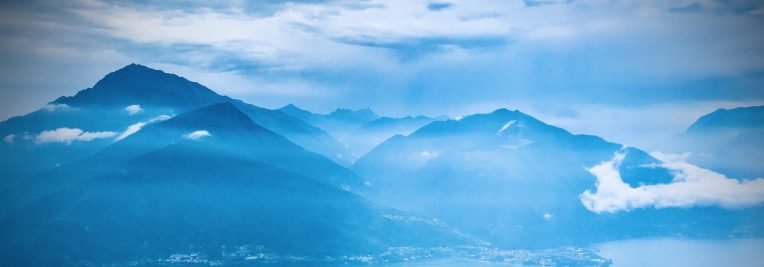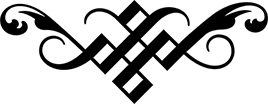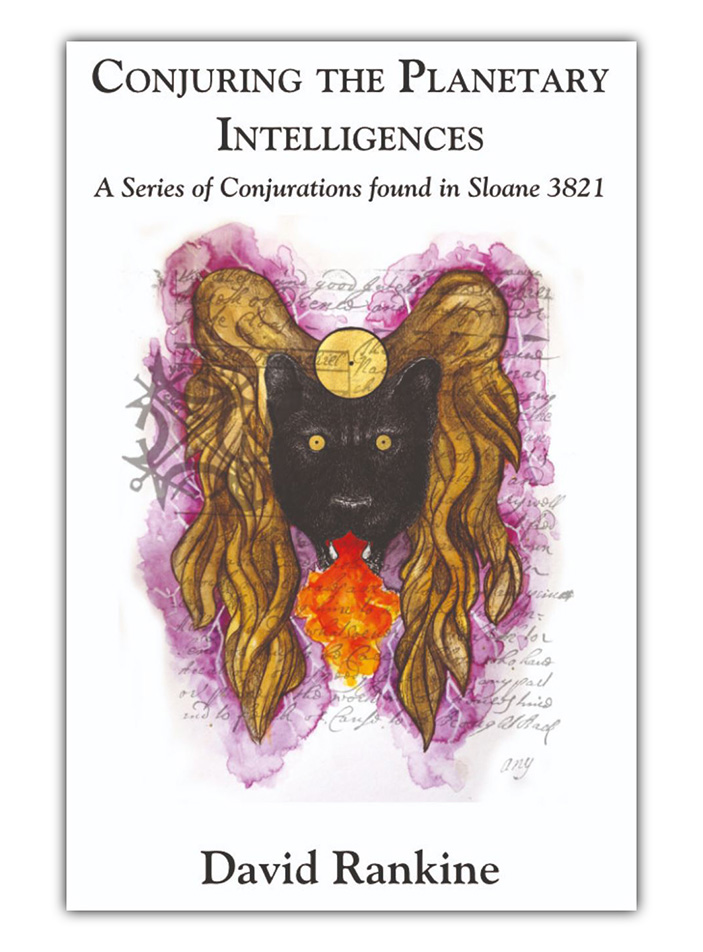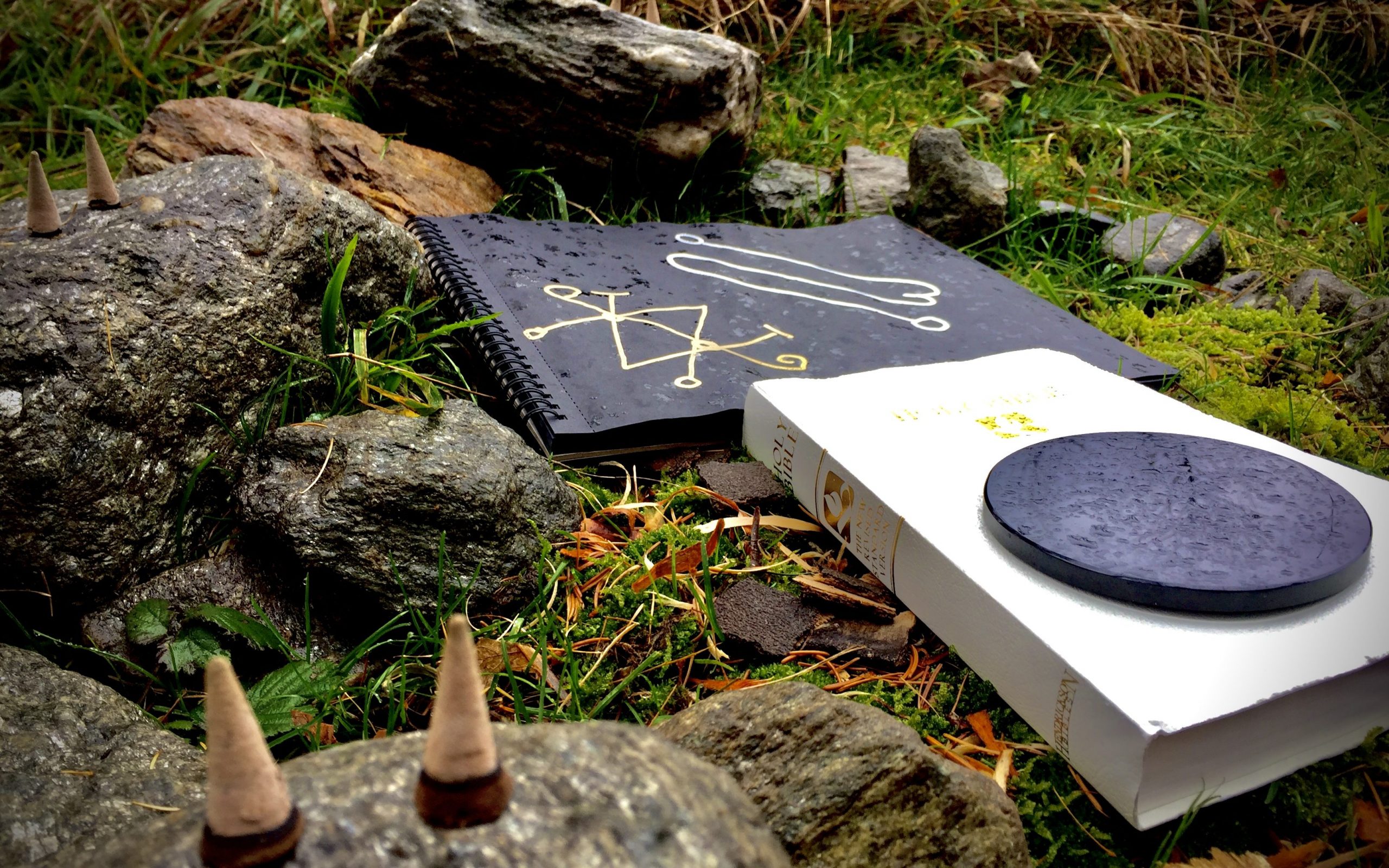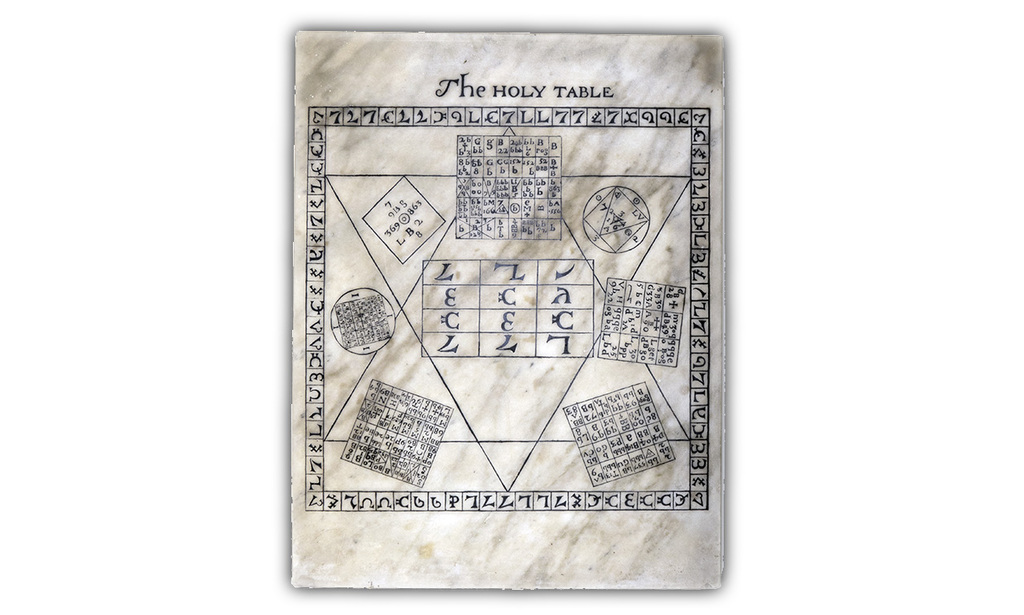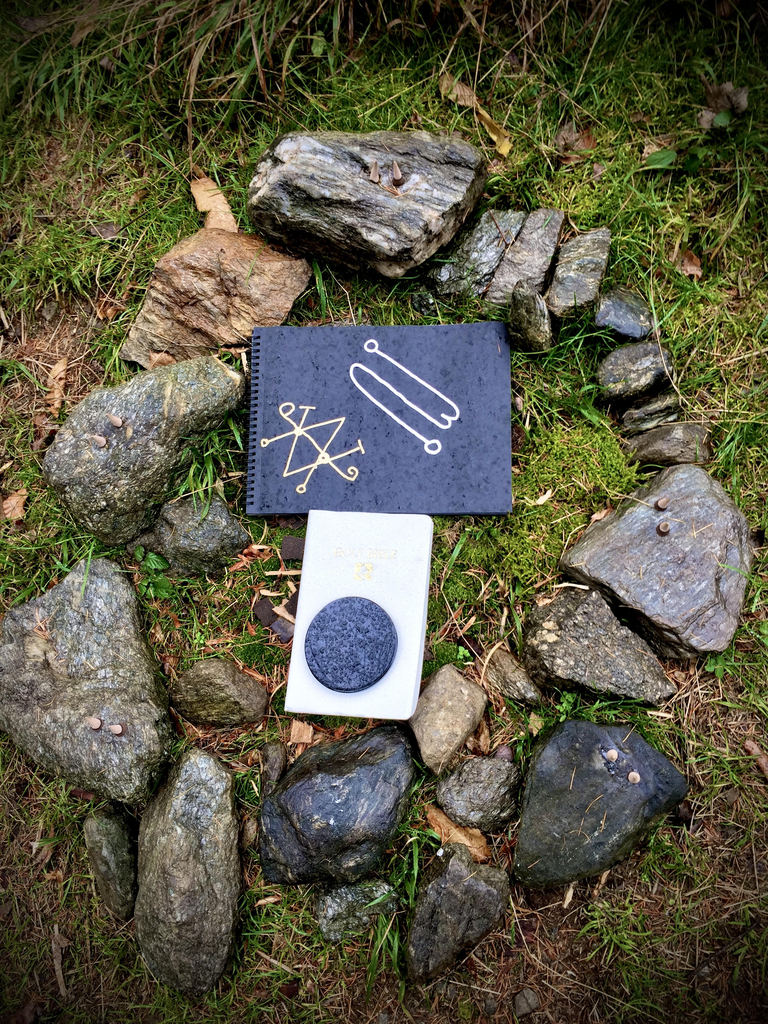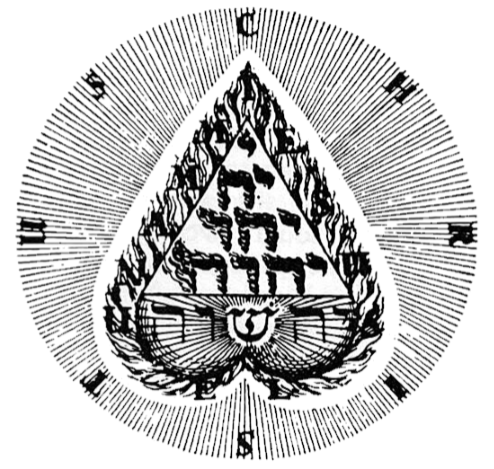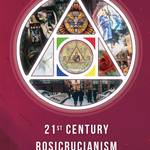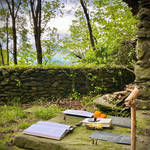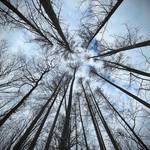There has been a lot of talk about what it means to practice Rosicrucianism. I have contributed to this discussion recently with posts on 21st Century Rosicrucianism and the Practical Paths of Rosicrucianism that try to create a framework for considering what it means to live a Rosicrucian life in our busy, digital world.
The first step, as with any path, is to commit yourself to daily practice. In the case of Rosicrucianism, we have a relatively easy starting point: prayer. For many, this could even be the entirety of their practical path and one that could take them – through the miracles of contemplation and the inward life – to the heights of spiritual and religious experience and, from there, embodiment within a life lived in the Spirit.
However, many of us are also drawn to the wide variety of different practical paths that our predecessors have dedicated themselves on both the alchemical and theurgic strands of our tradition. Over the coming months, I’m going to explore some of these so that we might develop our shared ideas around practical Rosicrucianism. The first such topic that I want to explore is planetary conjuration.
Conjuring the Planetary Intelligences
Astrology has always been a central component of Rosicrucianism and closely related to the mechanisms of both alchemy and theurgy that make up our two grand paths. From the early pre-Rosicrucian works of Trithemius, Paracelsus and Agrippa; then acknowledged in the ‘new stars’ of the Confessio Fraternitatis that “signify and gives themselves to everyone [and] are powerful Signacula of great weighty matters”; through to John Dee, Jacob Bohme, Robert Fludd, the emblems of the Geheime Figuren and the grimoire library of Elias Ashmole that becomes the foundation of many that follow. Even if there was some tension between the practice of astrology and planetary magic and the emerging scientific pursuits that the tradition was also promulgating, they are undeniably an important part of the Rosicrucian ethos.
A few months ago, I was fortunate enough to come across an open call-out from Joshua Proto who regularly works with the creation of talismans and was setting up a small study group to work through the text Conjuring the Planetary Intelligences that recreates a manuscript based heavily on Agrippa’s work in the 16th-century.
There were a few reasons why I was excited to participate:
- Astrology and planetary magic are areas of esoteric knowledge that I have a weak understanding of;
- The study group setting would allow me to learn how to properly approach such a working and share results with others;
- The Grand Conjunction of Saturn and Jupiter provided the perfect opportunity to experience such work, indeed an unmissable one!
With the reassuring guidance of Josh and other members of the study group, and armed with the sigils and invocation from the text, an election was chosen on which to conjure the beneficial intelligence of Saturn: Agiel.
I went into this working with a few different emotions. First, there was a needful trust placed into my study group peers as I am astrologically illiterate – so finding an appropriate election goes beyond my ability. Secondly, I had confidence in the ceremonial side of things; even though I have little experience with scrying, I am relatively well versed with ritual structure and protocols. Finally, and in conflict with that confidence, there was an apprehension which grew as we approached the chosen date (Sunday 20th December at 11am, in my case); primarily because I didn’t entirely know what to expect (being more mystic than magician), but also because Saturn is traditionally seen as a ‘malefic’ force and we had some discussion about so-called ‘parachute protocols’ in case anything happened that we weren’t comfortable with.
This apprehension grew with preliminary scrying sessions leading up to the date, during which I received a strong message (both visually and mental) that an ‘iron dagger’ was needed. Many reading this will be well aware that an iron dagger of this kind is an important ceremonial tool, particularly within the Solomonic grimoire tradition, and is used to ward off malevolent or unwanted forces and entities that might otherwise wish to intrude upon the ceremonial space. Receiving this message that I needed such spiritual protection was not exactly a reassuring moment!
Paradoxically, the low-level anxiety was coupled with the alternative idea that a likely scenario was nothing was really going to happen at all. Perhaps my abilities with scrying were undeveloped; or my understanding of the astrological components too minimal to generate results. These two ideas – of something unwanted or nothing at all – weighed on my mind as I went into the ceremony. Thankfully, neither of them came true.
Ceremonial Circumstances
Although I have a temple space at home, I decided that the focus and energy required for this ceremony would be better served outdoors. This seems counter-intuitive to the dimly lit, candle strewn altars that we might imagine for this kind of work (particularly when it comes to scrying) but there was a growing sense that I needed to find space up the mountain behind our village and conduct the operation there.
This proved to be a fruitful approach, as not only did the uphill walk provide a sense of pilgrimage but I was also fortunate enough to find an old fire-pit that had long grown over and made a perfect altar space. As you can see from the photo above, the setup I used was quite simple but had a natural elegance to it that boosted the experience considerably. I had also recently read through an update to the excellent Drawing Spirits into Crystals (DSIC)_analysis put together by Sam Block, where he not only mentions how Francis Barrett stated that a space away from home was desirable; but also that the complex table and crafted tools could be replaced quite simply by a scrying implement and a Bible. I took this approach quite literally through the use of:
- an obsidian scrying stone (5″);
- a white Bible (NRSV) that was placed inside the stone circle;
- drawings of the sigils for Saturn (gold) and Agiel (silver);
- patchouli-based incense cones that were lit at the beginning and then a second set half-way through the working.
The surroundings were an isolated wooded area that I was reasonably confident wouldn’t be disturbed by passers-by, particularly given the slightly damp and overcast weather. Both of these factors – the woodland and the gentle rain – would prove to be pivotal components in the working.
For those interested in such things (which I’m guessing is why you are reading this!), the working was conducted as follows:
- Items laid out in stone circle, first set of incense lit;
- LBRP variation used for consecration of space and invocation of Archangels;
- Invocation to Agiel (kneeling);
- DSIC Christian affirmations followed by questions (kneeling);
- Scrying;
- Second set of incense lit;
- Repeat Invocation/Affirmations/Questions/Scrying (standing);
- Repeat Questions/Scrying for verification (standing);
- Closing.
From start to finish, including the repeat, the whole working took almost exactly one hour (as punctuated by the local church bells). Given that it was timed to take place within the Saturn hour of that day, this was a perfect length and everything flowed smoothly without much feeling of needing to force anything or significant loss of concentration.
The Conjuration of Agiel
It feels strange to say it, but the conjuration was a success! Not only in the completion of the ritual with its intended result; but also in the way that the outdoor environment participated in the ceremony.
I mentioned at the start that I went into this with apprehension on one hand (am I out of my depth?); but also a kind of resignation that the most likely result would be a meditative experience, maybe with a slight shift in consciousness, but little obvious result.
At first, this seemed to be the case. I’m readily able to consecrate a space and then raise energy within it through the invocations; but my scrying is rudimentary at best. Initial results weren’t encouraging as I sat with the scrying mirror in hand, lifted off the Bible that it previously rested on.
Not to be dissuaded, I tried a different approach and returned the obsidian disc to its rightful place; stood up and repeated the invocation standing.
Suddenly, everything just clicked.
The reflection of the branches above slotted into a near-symmetrical geometric figure, similar to the Hexagram/Square combination found on John Dee’s Holy Table (minus the Enochian script). This was wholly different to the reflections I’d been seeing previously and had a clearly pointed and stable presence. It felt like a clear marker that the communication with Agiel had begun.
I won’t share here the answers to the DSIC questions, but I ran through them multiple times and received consistent and meaningful responses. What I found most interesting (and surprising) about the experience was how entirely visual it was.
I was expecting to predominantly experience that soft form of imaginative intuition that can be a wellspring of creativity and inspiration, but readily downplayed as just a magical parlour game we are playing with ourselves. What I experienced during this working, though, was pointed by its tangibility in visual representation specifically within and upon the obsidian disc that was the focal point for the conjuration. The black mirrored surface reflected a dense mesh of tree branches above, combining with the movements of rain drops hitting and collecting on the disc that moved and refracted; this field of potentiality engaging with my consciousness as it focused on the scrying task at hand.
Indeed, I felt unready to really capture the rapid transmission of visual communication that was coming through; shapes, forms, sigils, scripts, geometry, even occasionally more illustrative visualisations would assertively emerge out of the more random configuration of elements on the surface of the obsidian disc. Yes, this can be explained away through our scientific understanding of apophenia and pareidolia; but to deconstruct the experience downplays much of the creative possibility to be found within our consciousness and how it engages with the awe-inspiring and miraculous universe around us. The intensity of what emerged was surprising in its own right and shifted my perception of what to expect, as the results went well beyond what I was anticipating; yet unsurprisingly and in a humbling manner, tracked what the texts themselves were formulated to achieve.
I left the ritual space with a sense of entering a new perception of how these forms of spiritual practice are simultaneously temporal and profane; they are embedded within how our internal consciousness engages with the world, yet are still led by its external form; deeply personal, yet replicable and consistent across individuals. Returning back down the mountain path enabled a gradual integration of the metaphysical experience with the familiarity of daily existence; as important as the sense of sacred pilgrimage that emerged upon starting the journey upward.
I’m not one to speak with a fixed view on what had occurred and there are many different frameworks through which it could be considered; but I returned with a renewed confidence that it had worked. That the attempt to engage with a different facet of reality had brought meaningful results. It was also reassuring that Agiel had been a wholly positive and indeed delightful intelligence to communicate with. Far from the concerns I had about malefic forces, here was something excited to see me; playful and exuberant with a joyful energy that wanted to engage.
Notes for Next Time
When thinking about what I would do again next time, combined with what I would do differently, a few key items became immediately apparent:
- Moving the working up the mountain played a key role in it being successful. Not only did it make the experience more of a journey, but it also removed it from my day-to-day life and familiar environment. I’m blessed to have such surroundings, so will actively be using them for magical workings in future. Contemplative Prayer at home / Sacred Magic on the mountain.
- Keeping my hands off the scrying stone and placing it on the Bible, viewed from a standing position with it on the (quartz-laden) ground, brought excellent results. The field of potentiality that was created by the black mirrored surface; reflection of the tree branches above; and rain drops hitting the mirror provided a dynamic meeting space of macrocosm and microcosm that proved highly effective for successful scrying.
- A more defined sense of purpose is needed to continue such workings. As this was such a preliminary experiment, the operation itself was the point. However, now that its effectiveness has been proven I need a better sense of why I would want to do it again. Working with macrocosmic forces of this kind requires a level of respect and recognition that I need to be much clearer on in future. The questions from DSIC were a life-saver in many ways, as they provided an avenue of inquiry that worked and meant that I was able to participate in a meaningful and eye-opening experience; but I need to have a better understanding moving forward of where, what, how and why such operations might be continued.
Closing Thoughts
I’ve been hugely encouraged by this experience and will continue along such lines, taking into account the notes above. But there’s also another question worth careful consideration: can it be considered a form of practical Rosicrucianism?
On the outset, I think the answer is a resounding: yes! Both because it aligns with the activities of practitioners throughout the history of Rosicrucianism; but also because it fits into the core purpose of understanding the Book of Nature and the relationship between the macrocosmic and microcosmic universe in all its scale and glory. Conjurations of this kind speak strongly to the vast expanse of existence found around us and the unique role that consciousness plays in creating finite moments of expression for the infinite potentiality of Creation. I have been both humbled and energised by the communication that took place.
There are two caveats here, though, which I think are important in all such explorations into practical Rosicrucianism:
- A central component of Rosicrucianism is found within the phrase: Jesus mihi omnia… (Jesus is everything to me…). Without descending into dogmatism and allowing provision for a broad range of understanding, the Christian mysteries of the Incarnation and Holy Trinity should be considered within all practical works. This should be combined with graceful service to our role as agents of Divine Providence, found most readily in the affirmation that ‘Thy Kingdom Come; Thy Will Be Done’. Despite what many seem inclined to do, it seems self-evident that you can’t remove the Christ from Christian Rosenkreuz.
- What is the intent and purpose of the work? This becomes important in the primary Rosicrucian tenet to ‘cure the sick, and that gratis’. Many people who work with planetary conjurations or talismanic magic often request outcomes of personal gain – wealth, fame, love, strength etc. – which is not inherently negative, but I think it’s fair to say would also not be inherently Rosicrucian unless directed towards healing. The purpose of the operation and intention of the microcosmic relationship being developed with the macrocosmic universe (both of which were brought into existence through Creation) is key to whether or not such workings could be considered specifically as a form of practical Rosicrucianism.
Keeping these two things in view, it is beneficial for the modern Rosicrucian to explore different modes of practice with an open-mind and compassionate heart for what might result. Within our tradition we have proponents of many different styles of spiritual practice. Some reject anything related to ceremonial magic and prefer the inward Sanctification of the mystical approach; while others see an appropriate form of sacred magic as an important tool in developing experiential insight into the mechanisms of the Universe and eternal language of Providence both material and immaterial. Part of the elegance of Rosicrucianism is that it provides avenues and space for both of these forms of expression and development of our role as spiritual beings; provided we remain aware that our works are not done for our own personal advancement alone.
I still feel a bit conflicted about publishing this write-up, as these pursuits are often so personal as to be difficult to translate into a meaningful form (not to mention the pitfalls of self-aggrandisement that could result). I’m reminded, however, of the guidance received both through written works and from the many peers and fellow seekers along the way who, through sharing their own experiences, have greatly enhanced my own path and enabled it to flourish in so many ways. Without this kind of cross-fertilisation of ideas and experiences, it’s entirely possible that I wouldn’t have really even begun walking the spiritual path that I am on at all.
In some small way, then, I hope that this post informs or inspires your next step as a beacon of Light and agent of the Divine impulse within humanity. Rosicrucianism is an esoteric tradition that requires a proactive approach, both in the manner in which you develop your personal relationship with Nature and the Divine; but also in how you interact with your fellow beings in Creation and assist in bringing about the healing of suffering and the sanctification of the material world in its infinite variety of form. It is not something we merely do alone, but something that must be achieved together; and in that achieved for the benefit of all.
May Love, Light, Peace and Truth guide us.

